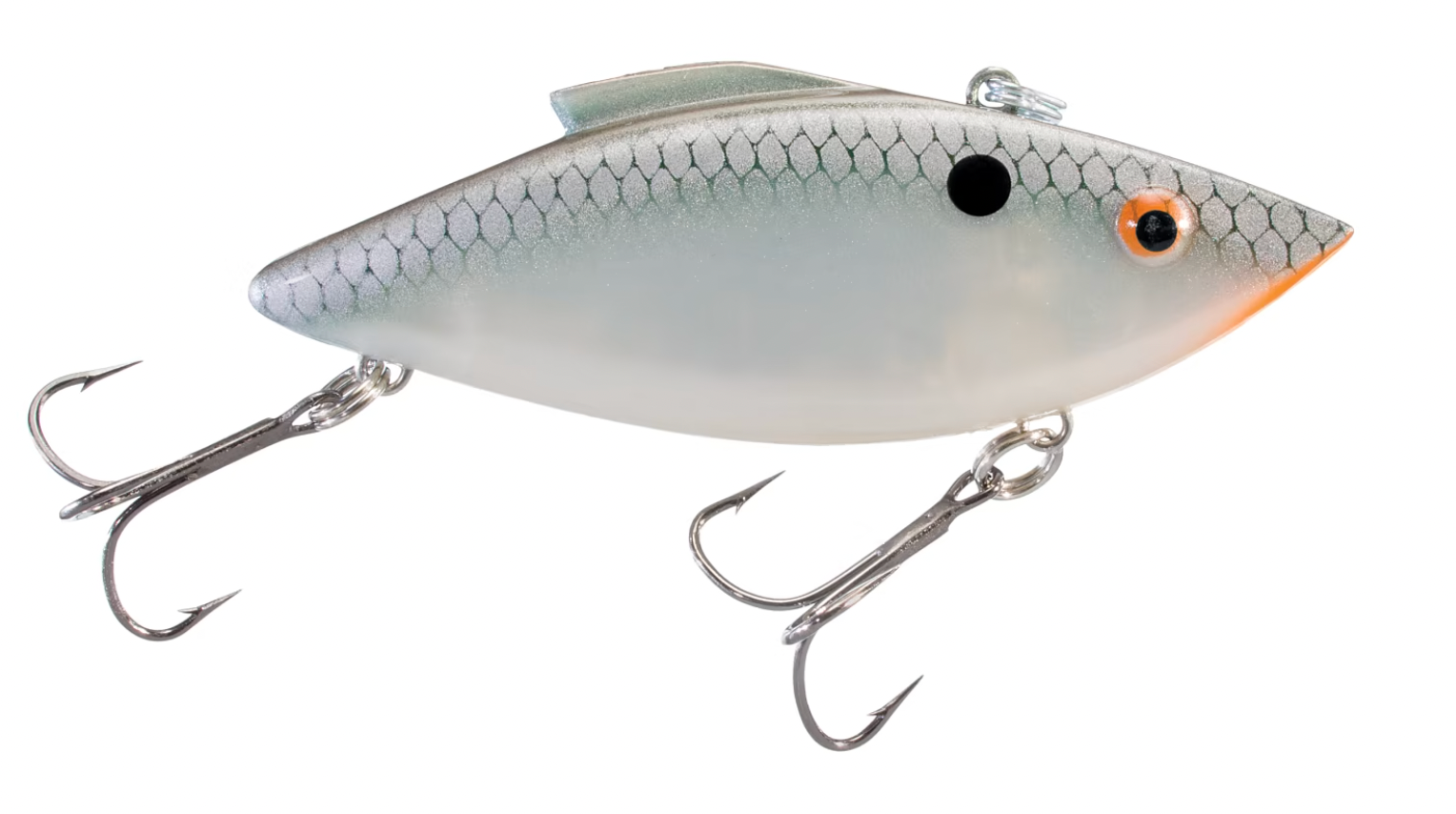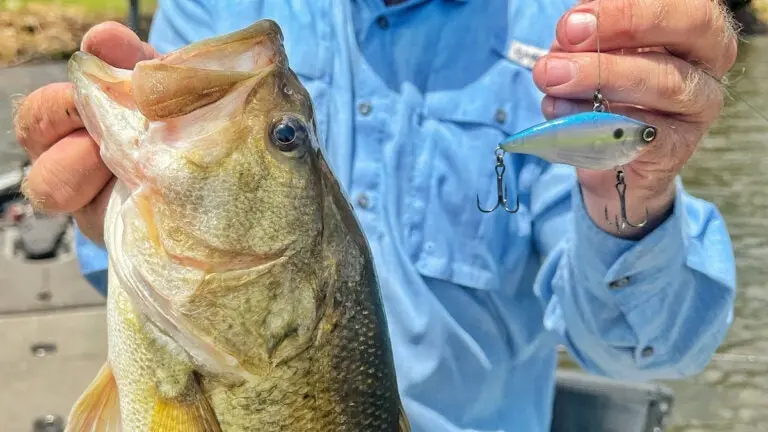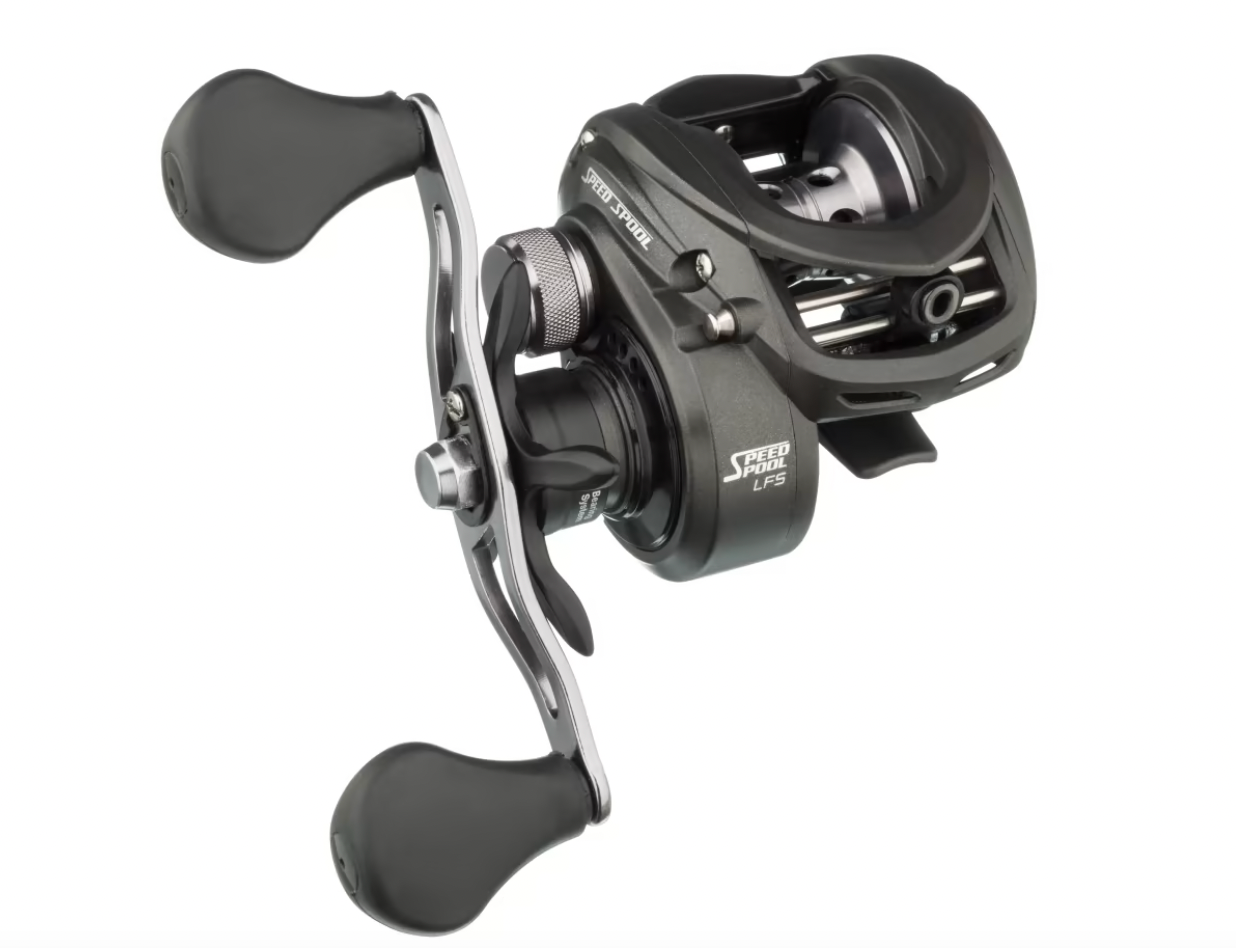_We may earn revenue from the products available on this page and participate in affiliate programs. Learn more ›
_
If you’re trying to temp bass suspended in open water or holding a little deeper along the bottom, try yo yo fishing a lipless crankbait
. This novel technique allows you to work your crank at various depths in the water column on the same cast. Yo yo fishing a lipless crankbait, also referred to as yo-yoing a trap (since a Rat-L-Trap
is one of the most popular lipless crankbaits of all time), gets your bait deep enough that these fish can see it, and the up-and-down action triggers a predatory response.
Why is it called yo yo fishing? Well, you know the classic toy, right? Up, down; up down. Yo-yoing a lipless crankbait makes the lure go up in the water column and then fall back down during the retrieve. But where the toy does this in a purely vertical motion, in yo yo fishing, the up-down motion happens over the length of a cast, which can really trigger strikes. So, here’s everything you need to know start yo yo fishing a crank—and catching more fish.
How to Yo Yo a Lipless Crankbait
To understand yo yo fishing a lipless crank, you need to first consider how these lures are different from others. Lipless crankbaits are some of the most versatile bass fishing lures of all time, especially when it comes to hard baits. They differ from other crankbaits in two primary ways: First, they sink, where other cranks float. Second, they don’t have bills, or lips, hence the name lipless crankbait.

The Original Rat-L-Trap is perfect for this technique. Bass Pro Shops
Crankbaits that float need a bill so that they can be cranked down to a specific depth. But since a lipless crankbait sinks, it doesn’t need a bill and can instead be fished at a wide variety of depths, depending on how long you let it sink and how slowly you reel it. You can also let it sink and pull it back up repeatedly throughout the retrieve, which is what yo-yoing is all about.
To start yo yo fishing, simply tie on a lipless crank, cast it out, drop your rod tip towards the water’s surface while letting the bait fall a few seconds, and then pop your rod tip back up. Turn the reel handle a few times while dropping your rod tip and letting the bait fall again for a couple seconds. Then pop your rod tip up again. It’s a lot like jig fishing, except with a crankbait. As you repeat this process, your bait will rip a few feet up and towards the boat, and then fall a few feet vertically. Then dart up and towards the boat again, and fall again. Up, down; up down.
How Yo Yo Fishing is Different
When fishing a lipless crankbait super shallow, say in 2 feet of water or less, a steady retrieve is your only option. You’ll basically hold your rod tip high in the air and burn the bait back to keep it from hanging on wood, grass, or other debris along the bottom. When fishing over submerged vegetation that’s sticking up 4 feet below the surface, for instance, you’ll reel your lipless crankbait a little deeper at a fairly steady pace, right along the top of the grass. You may rip the bait free when it catches on the cover, but you’re basically fishing it at one depth.
Yo yo fishing is different because you’re purposely fishing it at different depths throughout the retrieve, and you’re imparting a certain cadence to it—a rhythmic rising and falling of the bait that bass will key in on. You’ll find when yo-yoing a trap that most of your bites come on the fall. The bait appears to be injured and struggling to flee. When it makes a run, the bass knows that it will soon falter and fall again. That’s when the predator pounces and sucks in what it believes to be a dying shad.
When Yo Yo Fishing Works Best

This largemouth fell to a Yo Zuri Rattl’N Vibe
One Knock bait. Shaye Baker
This is a great technique to use on fish that are either suspended in open water at nearly any depth, or are on the bottom in more than 5 feet of water. And it can be used in clear to stained water, though it becomes less effective in especially muddy water.
Bass are very sensitive to vibrations in the water, using their lateral lines to detect movement and sounds. Lipless crankbaits have some of the loudest rattles of all baits out there, which make them easy for bass to target. The fish are also able to see these baits well, especially the clearer the water or the more vibrant or reflective the color of the bait. Lastly, a bass’s eyes are on the top of its head, which means it’s looking up almost all of the time.
When you take into consideration the sensitivity of a bass’s lateral line and the placement of its eyes, and then combine the vibration and high visibility of a lipless crankbait with the appealing rhythmic action of it bobbing up and down over the fish’s head, it’s easy to see why yo yo fishing a trap works so well on bass that are either suspended or sitting along the bottom.
Best Gear for Yo Yo Fishing a Crank
A medium to medium-heavy baitcasting rod in the 7- to 7- foot, 3- inch range works best for yo yo fishing. The strength and size of the ideal rod will vary based on the size of the bass and the amount of cover you’re fishing around. A longer, stronger rod will help you pull bass out of trees, brush piles, and vegetation. But a shorter, softer rod will help prevent the bass from pulling free. So, when possible, its good to err towards the smaller combo.

A fast baitcasting reel like Lew’s Speed Spool LFS helps you take up like quickly while yo-yoing a trap.
A fairly fast reel in a 7.5:1 gear ratio or higher
works well for yo yo fishing a crank, as it will allow you to take up line quickly between pulls of the bait, and help you catch up to a bass if it hits the bait on the fall and takes off. Fluorocarbon line is a must here, unless fishing over or around heavy cover. In most situations when yo yo fishing a trap, the low visibility of fluorocarbon line along with the fact that it sinks (where braided and monofilament lines float), makes fluoro the best selection for this technique.
Almost all lipless crankbaits work well for yo yo fishing. The aforementioned Bill Lewis Rat-L-Trap
is a great option, as is the classic Strike King Red Eye Shad
. Baits in the 1/2-ounce range are the most versatile. The more critical element is often selecting the right color and sound for the situation. The clearer the water, the more you’ll want a natural color or subtler sound. The more stain there is in the water, the more you should look for a bait with some flash or bright colors and a more aggressive sound.
The situations in which you may want steer away from the standard practices will have to do with fishing pressure. If there are a lot of other people fishing a lipless crankbait around you in clear water, don’t be afraid to use a bright and/or loud bait. And if the fish are highly pressured in stained water, sometimes a subtler bait will get more bites. But first, just get out there and start yo yo fishing a crank until you catch a few; once you get a feel for it, you can use this technique to boat more bass any time of the year.
![Field & Stream [dev]](https://images.ctfassets.net/fbkgl98xrr9f/1GnddAVcyeew2hQvUmrFpw/e4ca91baa53a1ecd66f76b1ef472932b/mob-logo.svg)

